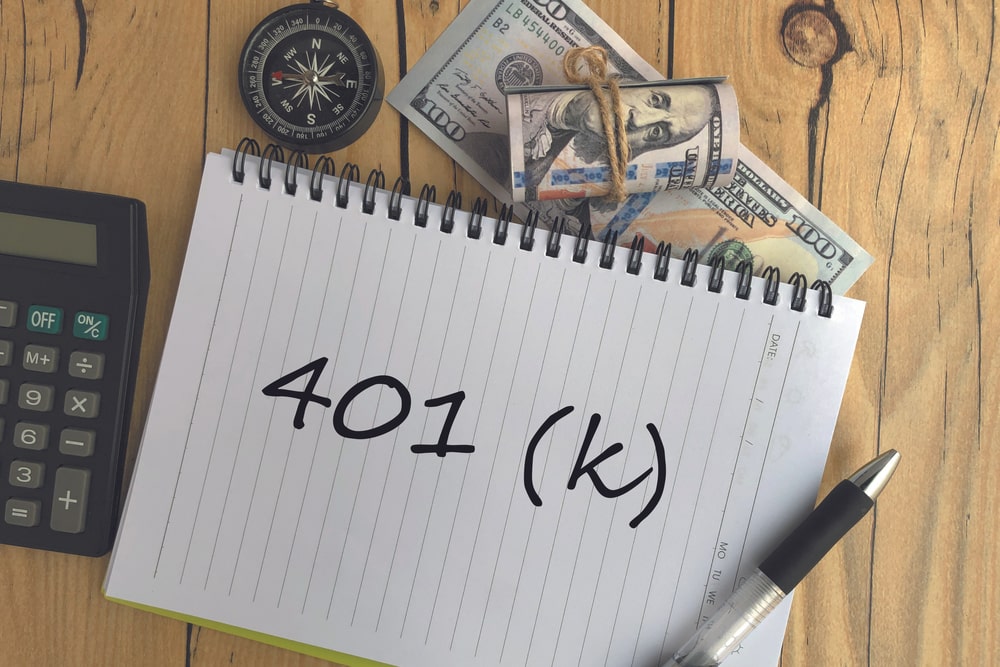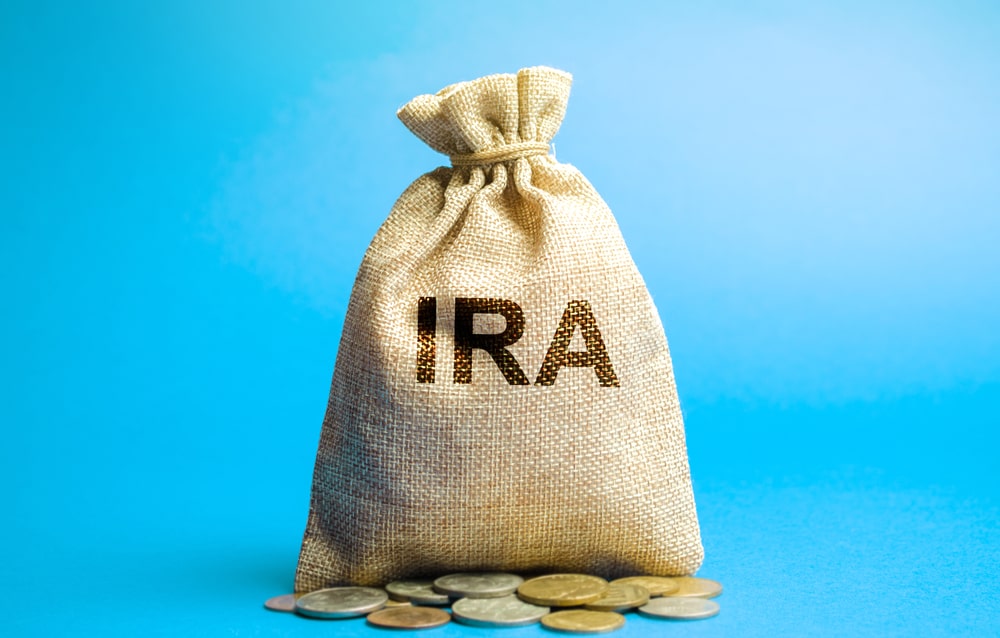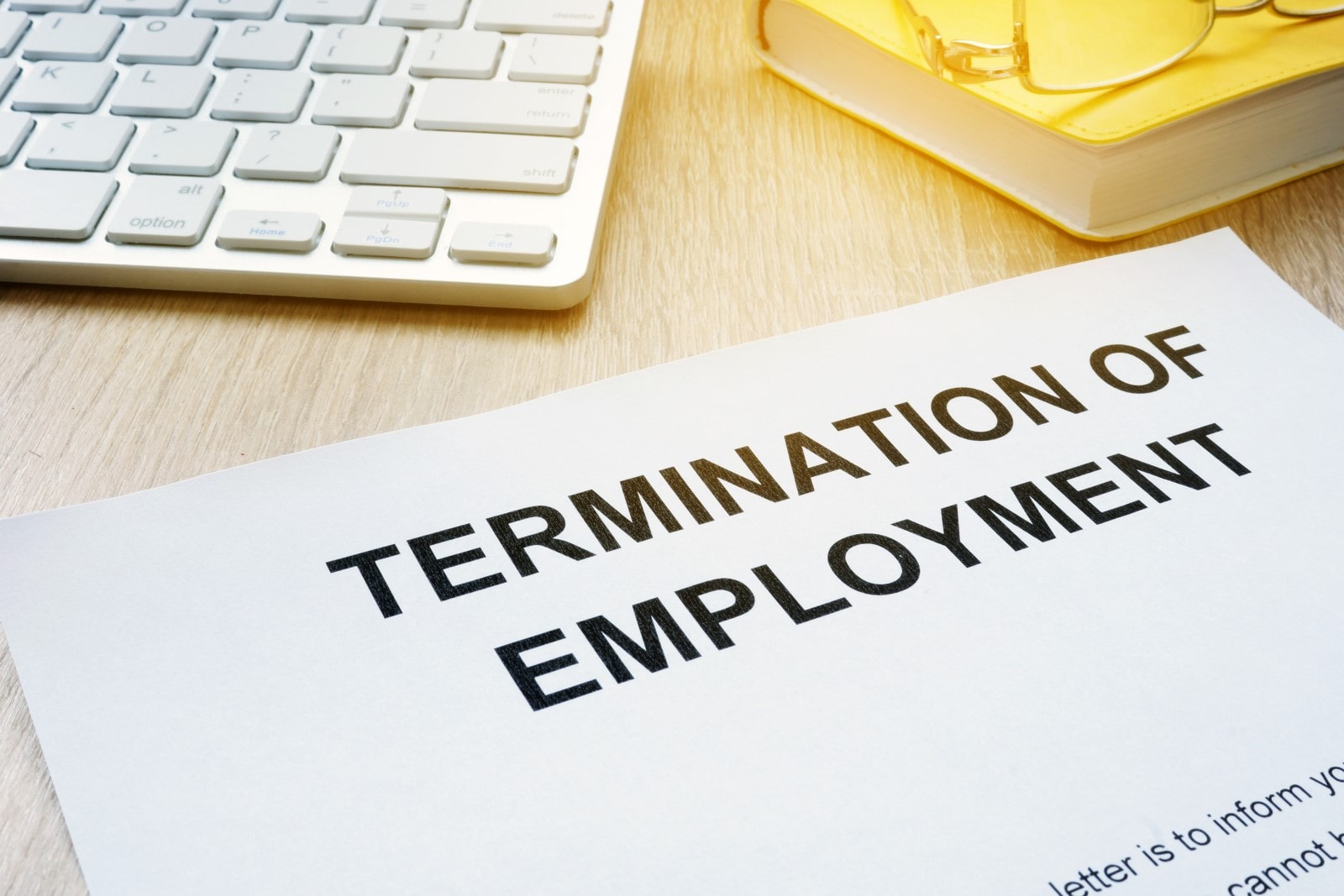Take a look at these 13 retirement accounts to find the best pension plan for you
Gone are the days when employees could rely on a company pension plan and social security to cover their costs in retirement. Today, pensions are a rarity, and social security is definitely not a given for future generations.

Therefore, to ensure your retirement is financially secure, it is advisable to create a plan ahead of time. For example, putting a portion of your salary into a tax-deferred retirement savings plan can help your assets grow exponentially, allowing you to spend your retirement worry-free.
When you know your retirement options, you’ll be better equipped to take full advantage of your benefits and actually achieve the retirement you want. For this reason, our article will tell you everything you need to know about the different types of plans and how to decide which plan is best for you.
What are the 3 types of retirement plans?
There are a variety of benefit plans offered as part of an employment relationship or as personal investments. Each of these plans has advantages and disadvantages. Some are deducted from your gross pay before taxation, while others are deducted after taxation. It’s important to take the time to understand what your company offers or discuss your individual investment with your bank or a financial planner to make sure you’re making the most of your retirement financial plan.
These are some of the most common retirement plans:
- Employer-sponsored retirement plans
Employer-sponsored plans include defined benefit plans such as annuities, defined contribution plans such as 401(k), Roth 401(k), 403(b), 457(b) and Thrift Savings Plans.
- 401(k) can be one of the best tools to create a secure retirement. It offers you two important benefits. First, all contributions and earnings to your 401(k) are tax-deferred. You only incur taxes on contributions and earnings when the money is withdrawn. Second, many employers make additional contributions to your account.
- Roth 401(k) accounts are subject to the same contribution limits as traditional 401(k) accounts. If your employer offers a 401(k) match and you contribute to a Roth 401(k) account, you will still be eligible for the match.
- Incidentally, many companies offer to match employee contributions to the 401(k) plan. Typically, the employer contributes a certain amount to the employee’s 401(k) plan based on guidelines established by the company.
- Individual retirement plans
Individual plans include traditional IRAs, ROTH IRAs, spousal IRAs, myRAs and rollover IRAs.
- Contributions to a traditional IRA allow you to claim a current tax deduction because earnings grow on a tax-deferred basis. While long-term savings in a Roth IRA offer better after-tax returns, a traditional IRA can be an excellent alternative if you qualify for the tax deduction.
- Retirement plans for self-employed individuals and small business owners
Pension plans such as SEP, SIMPLE and Payroll Deduction IRAs are designed for individuals or small business owners with employees.
How much do I need for retirement?
The answer varies from person to person and depends largely on your current income and the lifestyle you want to lead in retirement.
Your retirement income should be about 80% of your last salary before retirement. This means that if you earn $100,000 when you retire, you will need at least $80,000 per year to live a comfortable life in retirement. This amount can be adjusted up or down depending on other sources of income such as Social Security, pensions, and part-time employment.
Saving for retirement: the 4% rule
There are several methods for determining how much money you need to save to reach your desired income. One easy-to-use formula is to divide your desired annual retirement income by 4%.
For example, to reach the $80,000 mentioned above, you would need a nest egg of about $2 million ($80,000 ÷ 0.04). This strategy assumes a 5% rate of return (after taxes and inflation), no additional retirement income, and a lifestyle similar to what you would live in retirement.
Other savings measurements are as follows:
Age 40 – 2x annual salary
Age 50 – 4x annual salary
Age 60 – 6x annual salary
Age 67 – 8x annual salary
A higher savings rate can reduce the financial stress that usually results from worrying about saving enough for retirement. Sometimes you can save more – and sometimes you can save less. The important thing is to get as close to your savings goal as possible and monitor your progress each time you review it.
Because saving for retirement is so important, we’ve compiled information on all retirement plans, so you can find the best retirement plan for you on a personal level.
What are the best retirement plans for individuals?
Not everyone has access to an employer-sponsored retirement plan. If that’s the case, some of the best plans to save on your own are Individual Retirement Accounts (IRAs) and annuities. One of the most attractive aspects of independent retirement plans like IRAs is that you can open one as long as you have taxable (earned) income. And even if you already have an employer-sponsored retirement account, you can usually set up a traditional IRA, a Roth IRA and other independent accounts.
IRAs
An individual can set up an IRA at a financial institution such as a bank or brokerage firm to hold investments for retirement. The U.S. Internal Revenue Service limits the amount an individual can contribute to an IRA each year and, depending on the type of IRA, decides how the funds will be taxed – or exempt from taxation.
Advantages of IRAs
- You’re in the driver’s seat: You make all the investment decisions yourself.
- You also decide how and when to receive a tax break.
- IRAs offer a much wider range of investment choices than workplace plans.
Disadvantages of IRAs
- IRAs have lower annual contribution limits than most workplace retirement accounts.
- With a traditional IRA, anyone can make contributions regardless of income. However, the deductibility of your contributions may be limited if you have a retirement plan at work.

Types of IRAs
1. Traditional IRA
Anyone who earns taxable income can open a traditional IRA.
If you do not have a workplace retirement plan, traditional IRA contributions are generally tax-deductible. Contributions to a traditional IRA can be invested in a number of different investments, such as mutual funds and exchange-traded funds, and the investment earnings are tax-deferred. Once you make withdrawals after age 59 ½, your IRA distributions are taxed as ordinary income.
2. Roth IRA
If your annual income is not too high, a Roth IRA is one of the best retirement plans available.
Roth IRA contribution limits are based on your modified adjusted gross income. Contributions to a Roth IRA are made with after-tax money, meaning you’ve paid taxes on money that goes into the account.
Tax-free withdrawals: While your Roth IRA contributions aren’t tax-deductible today, you won’t have to pay income tax when you withdraw funds in retirement. Plus, you can withdraw the money you put into a Roth IRA before you retire without having to pay a penalty, so your Roth IRA can also serve as an emergency fund.
3. Spousal IRA
A spousal IRA is not actually a special form of individual retirement account.
Rather, it is a strategy that married couples can use to maximize their retirement savings through an IRA. If you’re married and you or your spouse doesn’t work or earns significantly less than the other, you can save more for retirement with a spousal IRA. The non-working spouse can open a traditional or Roth IRA in their name and make contributions based on household income. By being able to open another IRA and top up the account with contributions, some married couples can double their IRA retirement savings each year.
4. Fixed annuities
An annuity is a type of insurance contract that can supplement your retirement savings.
Fixed annuities are easier to understand and compare than other types of annuity contracts, such as indexed or variable annuities. Fixed annuities typically offer predictable benefits, tax-deferred growth and, in some cases, a death benefit that can be paid to a beneficiary if you pass away. Unlike other plans, annuities are not subject to IRS contribution restrictions, so you can invest as much as you want for your future.
What are the best employer-sponsored retirement accounts?
Of all the benefits you receive at work, your employer-sponsored retirement plan is probably one of the most valuable. There are several types – including 401(k)s, 403(b)s, 457(b)s and savings plans – and in some cases, your employer will match a percentage of your annual contributions. If your employer offers a plan that helps you save for retirement, be sure to opt for it because it can help you improve your retirement savings.
Defined contribution plan
Defined contribution plans are the most common form of workplace retirement plan today. Employers set up these plans to allow employees to make contributions to an individual account within the company plan – usually through payroll deduction. If you see “company match” on your record, it means you have access to free money: The company makes a contribution to your account based on your personal contribution.
Advantages of defined contribution plans
- They are easy to set up and administer.
- Your employer can match a portion of your contribution.
- The contribution limit is higher than those for IRAs.
- The Roth 401(k), unlike the Roth IRA, has no income limitations.
- Employee contributions (to non-Roth plans) reduce your taxable income for the year. Because of that upfront tax break, you will have to pay taxes on withdrawals in retirement.
Disadvantages of a defined benefit plan
- Investment options under employer-sponsored benefit plans are limited to certain funds, so you have fewer choices than with an IRA.
- New employees may have to meet a waiting period before they can make contributions to a plan (e.g., 30 to 90 days after hire).
- Employer contributions may be subject to a vesting schedule, meaning the money does not become the employee’s property until the employee has worked for the company for a certain amount of time.

Types of employer-funded pension plans
1. Traditional 401(k)
If your employer offers a 401(k) account, you can contribute to the plan with pre-tax contributions, meaning the contributions are not considered taxable income.
Your investments grow tax-deferred, which means you don’t pay taxes on your investments or their earnings until you make withdrawals in retirement. Employers can provide incentives for employees by matching a portion of contributions up to a certain percentage of salary.
2. Roth 401(k)
Many employers offer a Roth 401(k) option as part of their 401(k) plan.
With this plan, your contributions are made after tax, not before tax, and withdrawals in retirement are not taxed as income. Roth 401(k) accounts are subject to the same contribution limitations as traditional 401(k) accounts. If your employer offers a 401(k) matching contribution and you contribute to a Roth 401(k) account, you will still be eligible for that contribution.
The key to deciding between a Roth 401(k) and a traditional 401(k) is to determine when you think your taxes will be lower: now, while you’re making contributions to your 401(k), or in a few years when you withdraw the money in retirement.
3. 403(b) plan
If you work for a public school or nonprofit organization, your employer may offer a 403(b) retirement plan, also known as a tax-sheltered annuity or TSA plan.
If you are eligible to contribute to a 403(b) account, you make contributions from your salary on a pre-tax basis, and your money grows untaxed until you cash it out in retirement.
4. 457(b) plan
If you are employed by a state or local government agency, you may be able to save for retirement in a 457(b) plan.
Like a 401(k) plan, a 457(b) plan allows you to invest pre-tax money from your paycheck into your retirement account. The account is tax-deferred, meaning you don’t incur taxes on your contributions or earnings until you start taking withdrawals in retirement.
5. Thrift Savings Plan
A Thrift Savings Plan (TSP) is for federal employees and members of the armed forces only.
TSP accounts operate similarly to corporate 401(k) plans. You can contribute to a TSP with pre-tax amounts, and your money can grow tax-free until you withdraw it in retirement. Some TSPs allow Roth accounts that work like Roth 401(k)s.
What are the best retirement plans for self-employed individuals and small business owners?
As a small business owner or solo-entrepreneur, you’re on your own when it comes to saving for retirement. However, that doesn’t mean you can’t take advantage of at least some of the benefits available to people with employer-sponsored plans. If you are self-employed or have a business with fewer than 100 employees, you can choose from several retirement plans. Each plan has its own contribution limits and eligibility requirements. Take a closer look at your options below.
Retirement savings account for self-employed individuals
In addition to the plans described below for business owners, you can also invest in a Roth IRA or a Traditional IRA, which is subject to certain income limits that have lower annual contribution limits than most other plans. There are also some additional options that are not available to everyone, including the SEP IRA, SIMPLE IRA and Solo 401(k).
Advantages of plans for the self-employed
- Plans for freelancers, self-employed individuals and small business owners have higher contribution limits than most employer plans and IRAs.
- These plans often offer more investment options than employer-sponsored plans like 401(k)s.
- Many of the plans are easy to set up, so they aren’t a huge burden.
Disadvantages of plans for the self-employed
- Setting up and administering more complicated plans is up to the employer – and that can be you.
- Some plans have tighter parameters for allowable early withdrawals than traditional IRAs and employer-sponsored retirement plans.
- Loans from some plans must meet certain requirements and be requested by the participant.
- IRAs have a lower annual contribution limit than most workplace accounts.

Types of retirement plans for the self-employed
1. SIMPLE IRA
If you’re a small business owner and don’t have another retirement plan for your employees, consider a Savings Incentive Match Plan for Employees IRA, commonly known as a SIMPLE IRA.
With a SIMPLE IRA, you must make contributions for each of your employees.
2. SEP IRA
As a small business owner, you can set up a Simplified Employee Pension (SEP) plan.
SEPs are defined contribution retirement plans. Simplified Employee Pension plans set up SEP IRAs for self-employed individuals and small business owners. Employers that have SEP plans must offer them to all employees who earn at least $600 per year at their company, have worked there for at least three of the last five years, and are at least 21 years old.
Unlike other retirement plans, your employees cannot contribute to the SEP IRA – only the employer can. An important note: If you contribute to your own SEP as a business owner, you must contribute the same percentage to your employees’ SEP IRAs. Contributions made by your company may be tax deductible.
Good to know: There is a different calculation to determine allowable SEP contributions if you’re both the employer and employee.
3. Salary Deduction IRA
A payroll deduction IRA is a low-cost option that involves little work for a small business owner.
With this option, your employees open an IRA at a financial institution of their choice and then authorize payroll deductions to fund their IRA. As a small business owner, you are only responsible for deducting employees’ approved deductions from their paychecks and transferring them to their designated IRA account.
4. Solo 401(k)
If you are self-employed and have no employees other than a spouse who works at least part-time, you can open a Solo 401(k) account.
As with other types of 401(k)s, you can choose between a traditional Solo 401(k) and a Roth Solo 401(k). With a Solo 401(k), you can contribute to the account as both an employer and an employee. Therefore, as a self-employed individual, you may be able to contribute more to this retirement plan than any other.
Which retirement provider is the best for retirement planning?
To decide which IRA to invest in, compare your current tax bracket with your projected tax bracket in retirement. Try to decide which plan will result in lower taxes and higher income. As long as you take qualified distributions, you won’t have to pay taxes on the earnings. Like IRAs, 401(k) plans are tax-advantaged accounts used to save for retirement. However, they are offered by employers rather than set up by individuals. Note that 401(k)s are defined contribution plans. Employees contribute to their 401(k)s through automatic payroll deductions. And employers can also contribute money, in the form of what’s called an employer match.
These high contribution limits are an advantage of 401(k)s over traditional and Roth IRAs.
In addition, you should consider other factors such as:
- Age and retirement horizon
Your retirement horizon and age are always important points to consider when determining the right asset allocation. If you are at least 50 years old, participating in a plan that provides for catch-up contributions may be an attractive choice, especially if you are behind in building a nest egg. Participating in a 401(k) plan with a catch-up feature can help add larger amounts to your nest egg each year. IRAs also have a catch-up feature, but you can’t add such large broad amounts to your contribution.
- Purpose of funding a retirement account
While pension accounts are typically used to fund retirement, some people plan to leave these accounts to their beneficiaries. In this case, you need to think about whether you want to leave untaxed assets to your beneficiaries and avoid required minimum distributions that would reduce the balance in your accounts. Roth IRAs and Roth 401(k)s allow you to pay taxes when you make the initial contributions. For Roth IRAs, the RMD rules do not apply to the IRA owner, so a larger balance can be left to beneficiaries.
In many cases, it comes down to whether you prefer to take the advantages after the fact (Roth IRAs) or up front (traditional IRAs). The ultimate purpose of the account, such as retirement planning or estate planning, is also an important factor.

Which plans offer the most tax advantages?
If you’re thinking about retirement, tax planning should be part of your decision-making from the beginning. The two most common retirement accounts that can minimize your tax burden are tax-deferred and tax-free accounts. Both types of retirement accounts minimize lifetime tax liability, which provides an incentive to start saving for retirement at a young age. The most obvious difference between the two types of accounts is when the tax benefits kick in.
Tax-deferred accounts
Tax-deferred accounts allow you to take immediate tax deductions up to the full amount of the deposit, but future withdrawals from the account are offset against your ordinary income.
The most common tax-deferred retirement accounts are traditional IRAs and 401(k) plans.
A traditional IRA is a very popular account for retirement investing because it offers some valuable tax advantages and is funded with pre-tax dollars.
Advantages of accounts with tax deferral
- The immediate benefit of paying less tax in the current year is a strong incentive for many individuals to fund their tax-deferred accounts. Generally, the immediate tax benefit of current contributions is considered to outweigh the negative tax impact of future withdrawals.
- When a person retires, they are likely to earn less taxable personal income and thus fall into a lower tax bracket. High-income earners are generally strongly encouraged to take full advantage of their tax-deferred accounts to minimize their current tax burden.
Tax-exempt accounts
Tax-exempt accounts do not provide tax benefits when you contribute to them. Instead, they provide future tax benefits – withdrawals in retirement are untaxed. Because deposits to the account are after-tax, there is no immediate tax benefit. The main advantage of this structure is that investment earnings grow tax-free.
Popular tax-exempt accounts include the Roth IRA and the Roth 401(k).
A Roth IRA is an excellent choice because of its tremendous tax advantages if you can grow your retirement earnings without the IRS touching it again. Roth IRAs allow you to contribute after-tax dollars to your retirement savings.
Advantages of tax-exempt accounts
- Because the benefits of tax-free accounts don’t kick in for 40 years, some people ignore them. However, young adults who are either still in school or just starting their jobs are ideal candidates for untaxed accounts. At these early stages of life, their taxable earnings and corresponding tax bracket are typically minimal, but will likely increase in the future.
- By opening a tax-free account and investing the money in the market, an individual can access these funds and the additional capital growth without tax concerns. Since withdrawals from such an account are tax-free, withdrawing money in retirement will not result in a higher tax bracket.
Important: When considering these two alternatives, remember that you will always pay your taxes, and depending on the type of account, it is just a matter of when.
Conclusion: What is the best retirement plan or retirement account for you?
If you are employed, you have limited control over your retirement savings because your employer determines what types of plans you can enroll in. However, most employer-sponsored retirement accounts allow you to decide whether or not to make pre- or post-tax contributions (Roth contributions) to your account. Roth contributions are best for those who expect to pay more taxes in retirement. However, you should consider pre-tax contributions if you don’t mind paying taxes when you withdraw money from your account in retirement.
You can further enhance your retirement savings by opening a separate IRA in addition to your employer-sponsored plan (you can save for retirement with an IRA even if you’re unemployed).
Self-employed individuals and small business owners also have a number of options. Solo 401(k)s and SEP IRAs are best for self-employed individuals and small businesses looking to maximize their annual retirement savings. SIMPLE IRAs and payroll deduction IRAs are better options for small businesses that don’t mind offering their employees smaller annual contribution limits.
Frequently asked Questions about the best retirement plans
The IRA is one of the most widely used retirement plans. An individual can set up an IRA to hold investments (stocks, mutual funds, bonds and cash) for retirement.
The best retirement plans for individuals are traditional IRAs, Roth IRAs, and spousal IRAs. The best employer-sponsored retirement plans are 401(k)s, 403(b)s, 457(b)s, and savings plans.
Traditional 401(k) plans are tax-deferred. You don’t have to pay income tax on your contributions, though you do have to pay other payroll taxes such as Social Security and Medicare. You don’t pay income tax on 401(k) money until you withdraw it.




